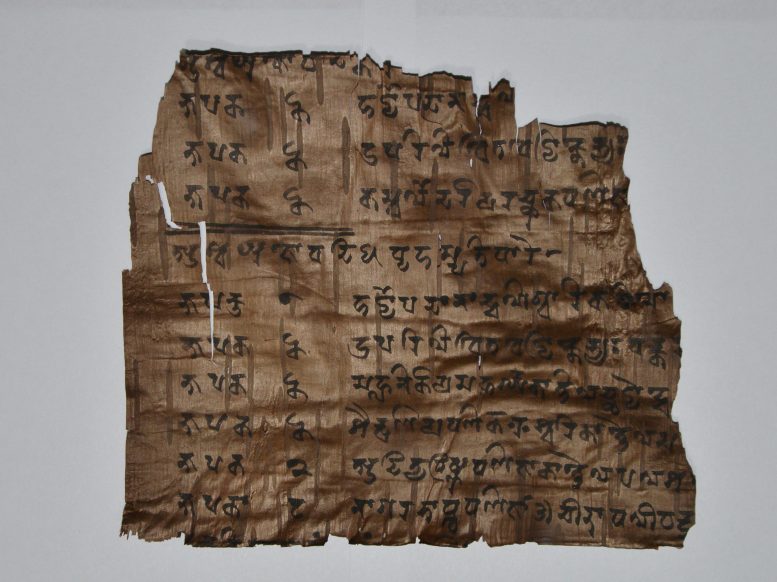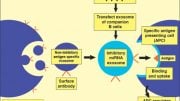
This is what the ancient Indian Proto-Sarada script looks like, here on a 14-centimetre-wide piece of birch bark. The terms “market” and “merchant” appear in the text, which indicates an economic context. Credit: Ingo Strauch / University of Lausanne
Between the 6th and 10th centuries AD, northwestern India underwent a major cultural shift from Buddhism to Hinduism, soon followed by Muslim invasions, with little recorded detail about this transformation. A research project is using ancient Proto-Sarada inscriptions to study this historical period, funded by national research foundations from Germany and Switzerland.
From the sixth to the tenth century AD, an important historical transition phase took place in the northwest of India, in what is now Pakistan: a predominantly Buddhist society became a Hindu society; this was immediately followed by the Muslim invasions. Little is known about the social, economic, and cultural history of this period of change.
Kathrin Holz, Junior Professor of Indology at Julius-Maximilians-Universität Würzburg (JMU) in Bavaria, Germany, and her colleague Professor Ingo Strauch from the University of Lausanne in Switzerland want to change that. They are using inscriptions and manuscripts written in the Proto-Sarada script – a script that was in use throughout north-west India at the time – as the key to this period of upheaval.
For the first time, the researchers will systematically collect, document and scientifically analyze historical evidence written in Proto-Sarada. They want to reconstruct the development and use of the ancient script and analyze the written objects with a regard to their material and historical context. The German Research Foundation (DFG) and the Swiss National Science Foundation (SNF) are funding the project.
Clay Seals and Manuscripts on Birch Bark
An important core of the project is a private collection of historical administrative documents and letters that have not yet been scientifically analyzed in any way. The collection consists of 35 folders, 43 large and 205 small birch bark scrolls, and 203 clay seals.
The collection is a real treasure, as there is not much evidence of the Proto-Sarada script. “This is because the birch bark, on which most of the writing was done, is not particularly durable in the tropical climate,” says Kathrin Holz.
The project aims to include all other known Proto-Sarada scriptures worldwide. The research team is planning an initial study trip to Pakistan in the autumn of 2024 to visit important museums and the local research partner, the Department of Archaeology at the University of Lahore.
Ultimately, the envisaged revision of the entire inscriptional corpus will result in a comprehensive edition of Proto-Sarada inscriptions.
Funding and Duration
The project “The Proto-Sarada Project: Towards the edition of a new collection of administrative letters and documents from pre-modern South Asia” will start on 1 August 2024 and run for three years. The German Research Foundation (DFG) is funding the project with around 368,000 euros and the Swiss National Science Foundation with 526,000 Swiss francs.









Be the first to comment on "Unveiling India’s Lost Era: Proto-Sarada Script Sheds Light on Mysterious 6th–10th Century Transition"